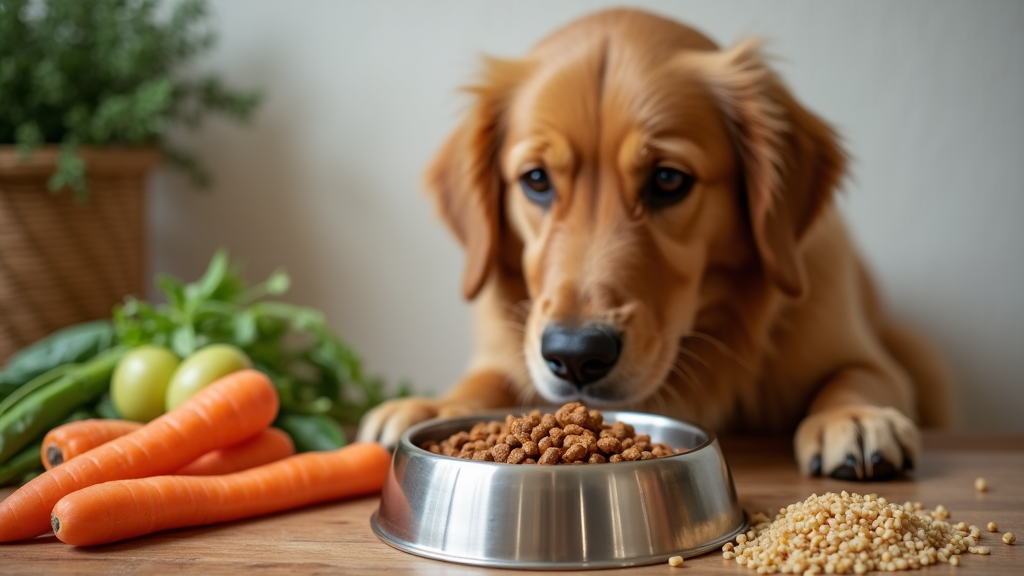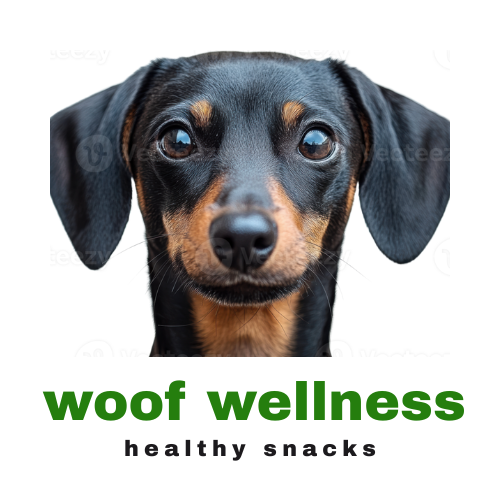Finding the best organic dog food for your pup isn’t always straightforward. There are tons of options: kibble, fresh, freeze dried, and more, each claiming to be healthier or better for your dog. I’ve spent years researching ingredients and checking what works for my own dog, so I know how overwhelming all the choices can feel. So, here’s an all in one look at top organic dog foods, how to spot truly organic options, and what matters most for your dog’s health and taste buds.

Understanding Organic Dog Food
When you see “organic” on a dog food label, it means the ingredients were grown or raised without synthetic pesticides, hormones, or antibiotics. In the U.S., dog food labeled as organic should meet USDA organic standards, just like organic human food. That means 95% or more of the ingredients are certified organic, and the rest follow strict guidelines as well.
There are a few terms you’ll run into:
- Organic: At least 95% of ingredients are organic and certified by the USDA.
- Made with organic ingredients: At least 70% is organic. The rest must follow certain standards, but it’s not quite as strict as full organic.
- Natural: This just means the food doesn’t include artificial colors or preservatives. It isn’t the same as organic and isn’t regulated by the same rules.
So, when you’re comparing foods, don’t mix up “organic” and “natural”. They aren’t interchangeable.
Best Organic Dog Food Brands
I’ve tried quite a few organic and holistic dog foods over the years, with plenty of trial and error. Whether you have a picky eater or a sensitive stomach pup, here are a few trusted brands worth checking out. These have good reputations, positive reviews, and meet the standards for organic labels.
- Castor & Pollux ORGANIX
This brand pops up again and again when people talk about truly organic kibble and canned foods. Every bag with “ORGANIX” on the front is USDA Certified Organic. It usually features organic chicken or turkey as the first ingredient, plus organic veggies and no corn, soy, or wheat. I like the grain free versions for dogs with allergies, and the chicken and sweet potato recipe is a favorite for many pups. They also add superfoods like organic flaxseed and coconut oil for some extra nutrition. - Tender & True Organic
Another solid brand, Tender & True uses only certified organic meats and ethically sourced ingredients. Their Organic Chicken & Liver Recipe is one I’ve given my own dog, and she takes to it right away, even with a picky appetite. They’re committed to animal welfare too, so you can feel good choosing it. - The Honest Kitchen
These guys focus on human grade, minimally processed food. They make “Whole Food Clusters,” sort of like fresh frozen kibble, using organic oats, organic chicken, and veggies. It’s a great choice if you want something close to homemade yet much easier on a busy schedule. Their foods are gently prepared to keep nutrients intact, making them easy on sensitive stomachs. - Newman’s Own Organics
This brand is easy to find in many stores. They offer several dry and canned recipes with organic beef, chicken, or turkey. It’s a little easier on the wallet than some other full organic brands, which can be a game changer if you have a bigger dog.
All these brands have a transparent ingredient list and third party certifications. If you want complete peace of mind about what’s in the bowl, these are pretty solid choices to start with. Many of them offer different recipes to match your dog’s age, size, and activity level, which can make things easier both for puppies and seniors.
Healthiest Fresh Organic Dog Food Options
Fresh or gently cooked organic dog food is super popular right now. It avoids the high heat processing of regular kibble, so more nutrients are preserved. A lot of these brands use delivery services, sending fresh meals straight to your door after you fill out a profile for your dog.
- Open Farm
Open Farm offers a fresh, gently cooked “Harvest” line made with humanely raised meats and lots of organic veggies. The sourcing is really transparent, and they use ingredients like organic kale, spinach, and carrots. Plus, you can trace every ingredient back to its source on their website, which gives me a lot of confidence. They offer environmentally friendly packaging as well, appealing to eco-minded pet owners. - The Farmer’s Dog
All recipes are made with USDA human grade meats and fresh produce. While not all recipes are certified organic, the quality is topnotch, and ingredients are non GMO and free from preservatives. My own dog went wild for their beef and sweet potato recipe. You just fill out a short quiz, and they send tailored meals to fit your dog’s needs. - PetPlate
PetPlate makes freshly cooked meals without artificial colors, flavors, or preservatives. They use some organic ingredients and focus on high quality sourcing, especially for meats and vegetables. Their turkey and vegetable entree has a pretty devoted fanbase among picky eaters. The convenience of pre portioned meals makes daily feeding easy.
When choosing the “healthiest” option, look for recipes that are balanced and complete (meeting AAFCO standards), made with wholefood ingredients, and processed as little as possible. If your budget allows, a fresh organic dog food delivery can be a great way to give a boost to your dog’s well-being with minimal effort.
PETA-Recommended Dog Foods
PETA’s focus isn’t just on organic foods; they care most about animal welfare and vegan or vegetarian options. For those interested in cruelty-free or plant based diets, here are some PETA-recommended brands:
- V-Dog
This vegan dog food brand is one of PETA’s top picks. It’s completely plant based, using peas, oats, and brown rice. All their products are free from animal products and byproducts, so they’re good for owners wanting to skip animal-derived ingredients. - Wild Earth
Wild Earth is another high protein, plant based dog food that’s been given a thumbs up by animal advocacy groups. This food uses koji (a type of fungi protein), chickpeas, oats, and sweet potatoes. It’s also high in fiber and contains omega fatty acids for a shiny coat. - Halo Holistic Vegan
This food uses non GMO vegetables and plant protein, and it carries some organic certifications for the fruit and veggie components. Halo is widely recommended for those wanting to avoid all animal derived ingredients, and its recipes are often palatable to even picky dogs.
Organic animal protein foods aren’t always on PETA’s list because their main focus is on animal free diets, but you can usually check their recommendations page to see the latest updates and expand your choices if you want more options.
What to Look For in Organic Dog Food
It’s easy to get overwhelmed at the pet store. Here are a few things I always check before picking up a new bag or can:
- USDA Organic Seal: This confirms the food really meets organic standards.
- Named Protein Sources: Check for foods with specific meats (like “organic chicken” or “organic beef”) instead of vague things like “meat meal.”
- Wholefood Carbohydrates: Ingredients like organic sweet potatoes, brown rice, oats, or peas are all good signs.
- Preservative and Additive List: The shorter, the better. Avoid artificial flavors and colors.
- AAFCO Nutritional Statement: This shows the food meets nutritional standards for your dog’s life stage (puppy, adult, senior). It’s a good baseline for safety.
I also look for any recent recalls or manufacturing controversies, since transparency and safety matter a lot to me as a pet parent. Reading reviews from other pet owners and checking for third party testing can offer further peace of mind.
Common Pitfalls and Honest Tips
Even with all the buzz around organic and “natural” foods, some brands use clever labeling to make their kibble sound healthier than it is. Don’t rely just on colorful bag designs or big letters on the front—here are some honest tips to keep in mind:
- Some brands use the word “organic” for one or two ingredients, not the whole formula, so don’t get fooled by the fine print.
- “Natural” doesn’t mean chemical free or pesticide free; it just means fewer artificial additives.
- Eye-catching superfoods and exotic ingredients can sound next-level cool, but aren’t always a deal breaker if they’re not present.
- Always check for recalls or controversies before switching to a new brand, since even popular ones can face safety issues.
Before making big changes to your dog’s food, ask your vet, especially if your pup has allergies, chronic health issues, or is a picky eater. Transition gradually to avoid digestive upset: a week or two of mixing old and new food works well for most dogs and helps your dog get used to the new taste and texture.
Stepping up your dog’s diet with organic food may seem like a big switch, but taking the time to track down real organic options can make a real difference in their well-being. Remember to read labels, check certifications, and ask your vet for guidance if you’re not sure what’s best—finding the right food might take a couple tries, but your dog will thank you for it in the long run!
